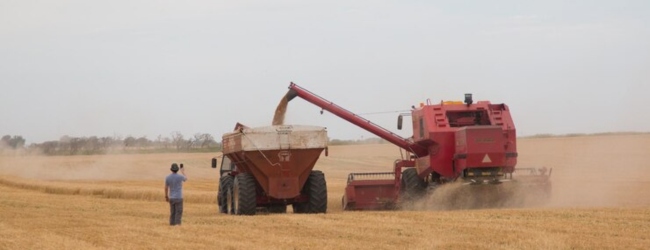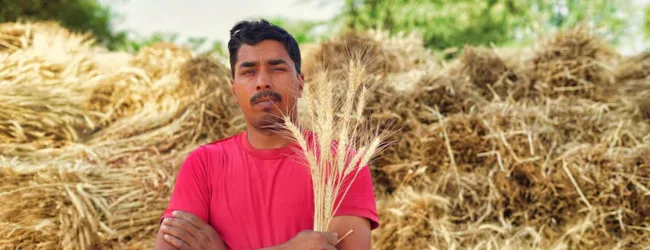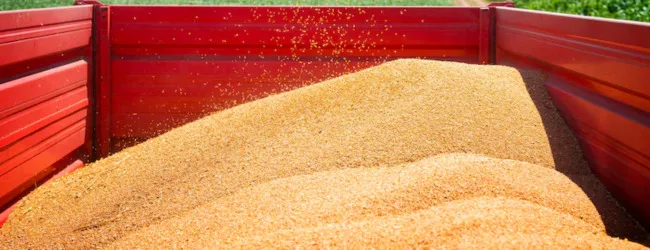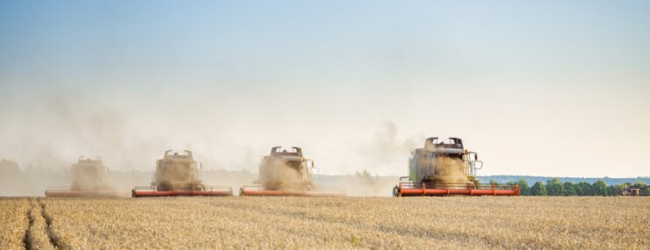Table of contents
- What is Commercial Grain Farming?
- Major Grains Grown in India
- Why Choose Commercial Grain Farming?
- Best States for Commercial Grain Farming in India
- Step-by-Step Process to Start Commercial Grain Farming
- Investment & Cost Breakdown (2025)
- Profit Potential & Revenue Streams
- Challenges & How to Overcome Them
- Government Schemes & Subsidies
- Marketing, Storage, and Export
- Case Study: Successful Grain Farming Business in India
- Conclusion
- Frequently Asked Questions (FAQs)
Commercial grain farming is a large-scale agricultural practice focused on growing grains like wheat, rice, maize, and barley for profit. In India, it plays a vital role in both the economy and food security. This guide will help you understand the what, where, how, and why of commercial grain farming in 2025, especially if you’re considering this as a business or livelihood.
What is Commercial Grain Farming?

Commercial grain farming involves cultivating grains on a large scale for market sale, rather than for personal consumption.
Main Points:
- Focus is on high-yield, profitable crops.
- Requires significant land, machinery, and labour.
- Common in areas with flat terrain and good irrigation.
Major Grains Grown in India

India grows a wide variety of grains, adapted to different climates and soil types.
Main Grains:
- Wheat – Uttar Pradesh, Punjab
- Rice – West Bengal, Andhra Pradesh
- Maize (Corn) – Karnataka, Bihar
- Barley – Rajasthan, Haryana
- Millets (Pearl millet, Finger millet) – Maharashtra, Tamil Nadu
Why Choose Commercial Grain Farming?
Grain farming has long-term demand and scope for business scalability.
Key Benefits:
- Stable demand – grains are staple foods.
- High mechanisation – less manual labour.
- Multiple revenue streams – grain, by-products, and export.
- Government support – subsidies and MSP.
Best States for Commercial Grain Farming in India
| State | Ideal Grain | Reason |
|---|---|---|
| Punjab | Wheat & Rice | Fertile soil, irrigation |
| Andhra Pradesh | Rice | Ample rainfall, canal irrigation |
| Karnataka | Maize | Diverse agro-climate |
| Rajasthan | Barley, Bajra | Dryland farming expertise |
| Bihar | Maize, Wheat | Rising grain productivity |
💡 Pro Tip: If you want to start a Business but have too many doubts, connect with a Business expert from Boss Wallah for guidance – Check Out
Step-by-Step Process to Start Commercial Grain Farming
Brief: Planning and execution are crucial for success.
Steps:
- Land Selection – Choose land with appropriate soil and irrigation.
- Soil Testing – Check pH, nutrient levels.
- Choose the Grain – Based on region, market, and climate.
- Seed Selection – Use certified, high-yield varieties.
- Land Preparation – Ploughing, levelling.
- Sowing – Timing and spacing matter.
- Irrigation – Follow crop-specific watering schedules.
- Fertilisation & Pest Control – Use organic or chemical inputs as per need.
- Harvesting – Use combine harvesters for efficiency.
- Post-Harvest Processing – Cleaning, drying, and packaging.
Investment & Cost Breakdown (2025)
Estimated Costs for 1 Acre of Wheat Farming:
| Component | Cost (INR) |
| Land Preparation | 3,000 |
| Seeds | 2,500 |
| Fertilizers & Pesticides | 3,000 |
| Irrigation | 2,000 |
| Labor | 3,000 |
| Machinery Rental | 2,500 |
| Miscellaneous | 1,000 |
| Total | 17,000 |
ALSO READ | Multilayer Farming: A Comprehensive Guide
Profit Potential & Revenue Streams
Main Sources of Income:
- Sale of Grains – Local mandis or wholesale buyers.
- By-products – Bran, husk, fodder.
- Agri-processing Units – Milling, packaging.
- Export Opportunities – Premium quality grains.
Average Return (Wheat Example):
- Yield: 20 quintals/acre
- Market Price: ₹2,150/quintal
- Gross Income: ₹43,000/acre
- Net Profit: ₹26,000/acre
Challenges & How to Overcome Them
Challenges:
- Climate Change – Use drought-resistant varieties.
- Storage Losses – Invest in proper warehousing.
- Market Fluctuations – Use the government MSP.
- Pest Attacks – Integrated Pest Management (IPM).
Government Schemes & Subsidies
Support Available:
- PM-KISAN Yojana – ₹6,000/year direct income.
- NABARD Loans – Low-interest farm loans.
- Soil Health Card Scheme – For optimised fertilisation.
- Crop Insurance (PMFBY) – Against weather and pest losses.
Visit the Agri Portal for official schemes.
ALSO READ | Find Out 8 Steps of Farming with Pictures: Complete Guide
Marketing, Storage, and Export

Marketing Options:
- Local mandis
- FPOs (Farmer Producer Organisations)
- Agri-tech platforms (e.g., DeHaat, AgriBazaar)
Storage:
- Godowns, silos, and cold storage (for some grains).
Export:
Case Study: Successful Grain Farming Business in India

Name: Ramesh Yadav – Madhya Pradesh
- Started: 2017 with 5 acres
- Now: Owns 50 acres; also exports maize to the UAE
- Income: Over ₹20 lakhs annually
- Success Secret: Use of modern tech, direct-to-retail model
Need Expert Guidance?
Starting a business can be challenging, but you don’t have to do it alone! At Boss Wallah, our 2,000+ business experts are ready to provide valuable insights and guidance. Whether you need help with marketing, finance, sourcing, or any other area of any business, our business experts are here to help you succeed
Confused about Which Business to Start?
Want to start your own business but unsure which one to choose? Explore Boss Wallah, where you’ll find 500+ courses by successful business owners, featuring practical, step-by-step guides on starting and growing various businesses.
Find your perfect business idea today
Conclusion
Commercial grain farming is a profitable and sustainable venture in India, especially in 2025, as demand for food grains continues to rise. With the right land, crop, support, and market strategy, even small-scale farmers can turn this into a flourishing business.
Frequently Asked Questions (FAQs)
1. What is commercial grain farming?
- It’s large-scale grain cultivation for profit.
2. Which are the most profitable grains in India?
- Wheat, rice, maize, and millets.
3. How much land is required to start?
- Minimum 1 acre; larger areas offer better returns.
4. How much investment is needed for 1 acre?
- Around ₹17,000 to ₹20,000.
5. What is MSP?
- Minimum Support Price is set by the government to ensure farmers profit.
6. What are the risks involved?
- Climate, pests, and price drops.
7. Can I get a loan for this?
- Yes, from NABARD and banks under the agri-loan schemes.
8. Where can I sell my grains?
- Mandis, FPOs, online platforms.
9. Is crop insurance necessary?
- Highly recommended to reduce risk.
10. Can women and youth start this business?
- Absolutely. Many women-led agri-startups are thriving today.


